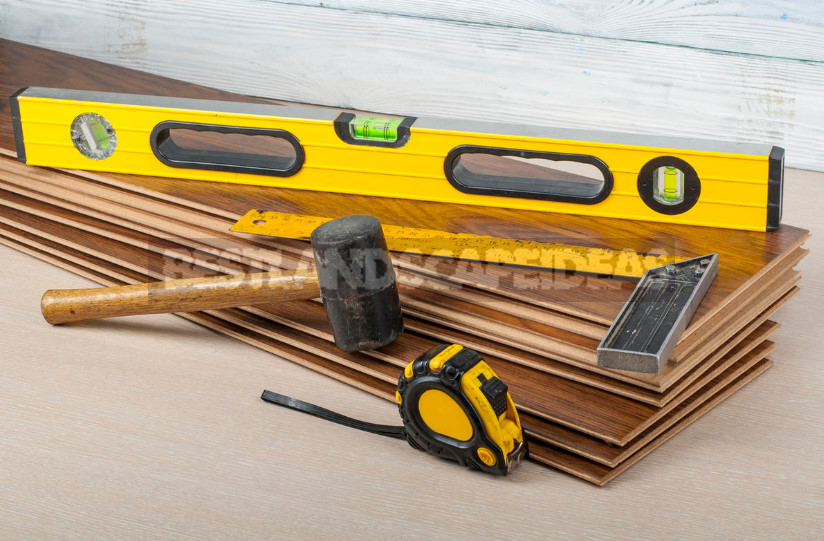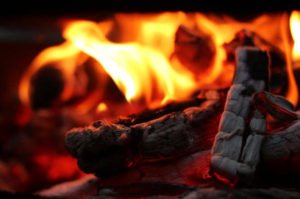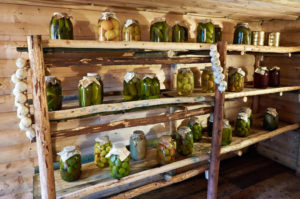In the 90-ies of the last century, the markets of building materials flooded all sorts of new products, including in the field of floor coverings. At the same time, many of our fellow citizens first got acquainted with the laminate, which was created to replace the parquet. It should be recognized that the task of the new flooring coped quickly, and soon surpassed the parquet in many respects. In appearance, high-quality laminate flooring can be distinguished from only an experienced specialist.
And yet the materials from which the coatings are made are completely different, although the basis of both — wood. Features of parquet we have recently comprehensively reviewed and discussed, and today we will pay attention to artificial laminate flooring.
Laminate construction
Of course, all manufacturing companies use their patented technology for the production of the laminate. However, the General principle of its manufacture remains unchanged. Laminated parquet consists of the following layers (from bottom to top):
- stabilizing-the lower layer protects the coating from moisture and compensates for stresses arising in the manufacture of;
- basic-the base layer of the coating carries the main load. The basis of most laminates-wood-fiber plate of high density, less common wood-fiber plate of medium density. The first is obtained at a higher pressure, so it has better characteristics (higher strength, water resistance). Wood-fiber plate of high density is divided into moisture-resistant and non-resistant. Usually the level of moisture resistance is not indicated on the package, but the price of the product increases;
- decorative-above is a decorative layer that resembles ordinary paper with a pattern. The images on it can be very diverse. The most popular “plot” — imitation of wood pattern of any color and breed. For kitchens and corridors often use a print under a stone and a tile. There are drawings that create the effect of the old floor, depicting scratches, cracks, traces of shoes;

- protective-the lower layers of laminate glued or pressed. Manufacturing technology depends on the manufacturer. And then laminated: simply put, covered with plastic. In fact, it is a layer of resin — acrylate or melamine (may be with the addition of corundum particles). This artificial material can withstand heavy mechanical loads (shoes with heels, roller mechanisms), resistant to many chemicals, it will not leave a trace of a quickly raised lit cigarette. It was a layer of resins that gave the name to the new product.
In addition to these, leading manufacturers introduce additional layers responsible for certain properties of the floor product: to the floor surface is not electrified, use a coating with special films (the presence of which is indicated on the package) and others.
How to check laminate
The top layer determines probably the most important characteristic of the laminate-wear resistance. It is responsible for the durability of the coating, for how long the floor surface will remain without scratches and damage. Wear resistance is determined by Taber-test (the sample is placed under a rotating circle, “task” which — damage to the top layer of the laminate). However, this method of checking little by little out of practice.
In 1994, the Association of European manufacturers of laminate flooring EPLF was founded in Germany, which tried to standardize the quality check of the laminate. In addition to the abrasion resistance test, light resistance, heat resistance, chemical resistance and so on are tested.
According to the European standard EN 13329 laminate is divided into 6 classes (31, 32, 33, 21, 22, 23). The first figure of the class shows in which rooms it is desirable to use it. “Three “means that the laminate is intended for use in public buildings,” two ” — for home use.
Naturally, if the laminate intended for public spaces (class 31, 32, 33), to lay houses, its service life will increase. The second figure of the class-the indicator of the load experienced by the room: 1-weak load, 2 — medium, 3 — intense. Thus, we get that the 21 class can be used in the home with a weak load (bedroom), and 33 — in public buildings with intense load. Each class has a graphic symbol, which is indicated on the package. But there are some pitfalls: many firms indicate on the package the class of the laminate without conducting proper tests. Therefore, we must determine whether the firm in the pan-European EPLF, or the grounds on which assigns a class to the laminate.
Advantages and disadvantages
Some special properties of the laminate are usually specified by the manufacturer in the form of schematic pictures (sometimes with inscriptions). The special properties of the laminate include: noiselessness, increased resistance to mechanical stress, ease of cleaning, the possibility of using the coating for the device of Underfloor heating.
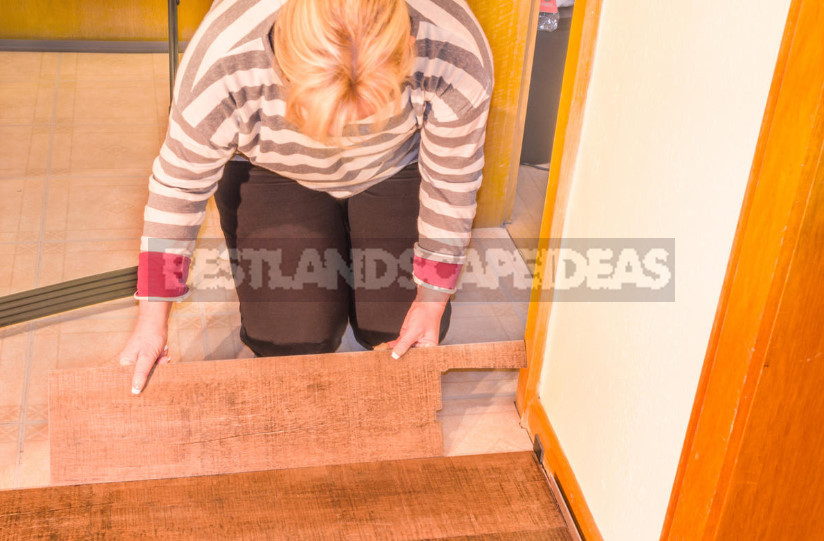
Quietness is an important factor when choosing a floor covering. Now most manufacturers produce” silent ” laminates when walking on it there is no ringing sound.
But not every laminate can be used for Underfloor heating. Most laminate flooring are highly sensitive to temperature changes.
Want to share your own experiences (and he has almost two decades) of operation of the laminate. I see an additional advantage of this material is that when it falls on the tableware, it breaks very rarely. The real reason that the fallen plates and cups remain intact, I see in the foam substrate (2 mm) under the laminate, playing the role of a damper.
When laying, there is a glue and lock connection method. If it is assumed adhesive, the edges of the “boards” smooth. If the lock, on the one hand there should be a groove, and on the other — a ledge.

In this case, the elements are well and quickly connected to each other (with a small click — the lock is slammed). Most laminate flooring is produced with interlocks. Therefore, there was another characteristic of the laminate-tensile strength. The connection must withstand a load of about a ton.
Again remembering own experience of operation of a laminate, I want to focus your attention on one its shortcoming of a connecting knot. The fact is that some docking planes are not laminated, so they are afraid of moisture. However, when installing the slats are advised to glue them at least with glue, but this is an unreliable protection. It is necessary to accidentally pour water on the floor, and it will rush into the gaps between the slats and try to get into them. I remember my cat decided to mark property boundaries: the result is a swollen laminate flooring in the place of the leprosy home of the tiger.
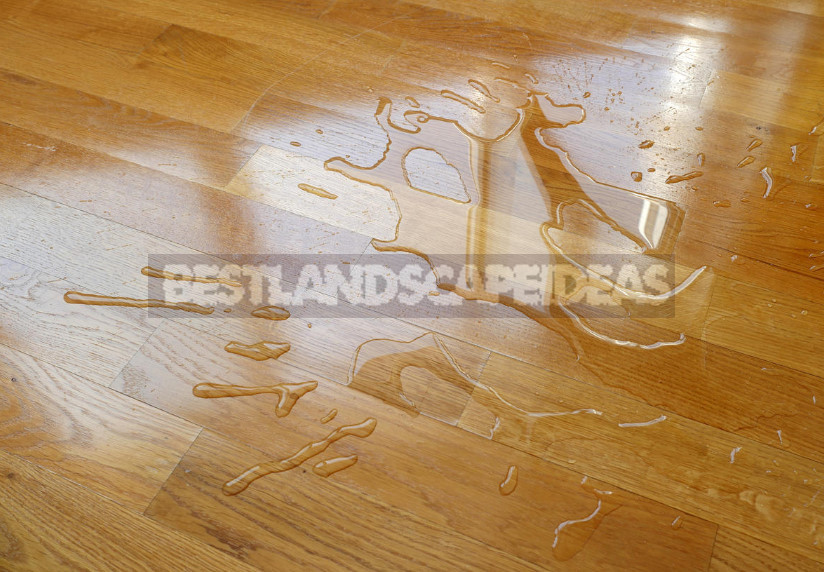
Laminate is able to expand and contract with changes in humidity and temperature, so fit floating way. In this case, between the wall and the coating necessarily leave an expansion gap, and the floor is not attached to the base.
Undoubtedly, laminate-durable, practical, economical, easy to install and pleasant-looking coating that can decorate your cottage.
